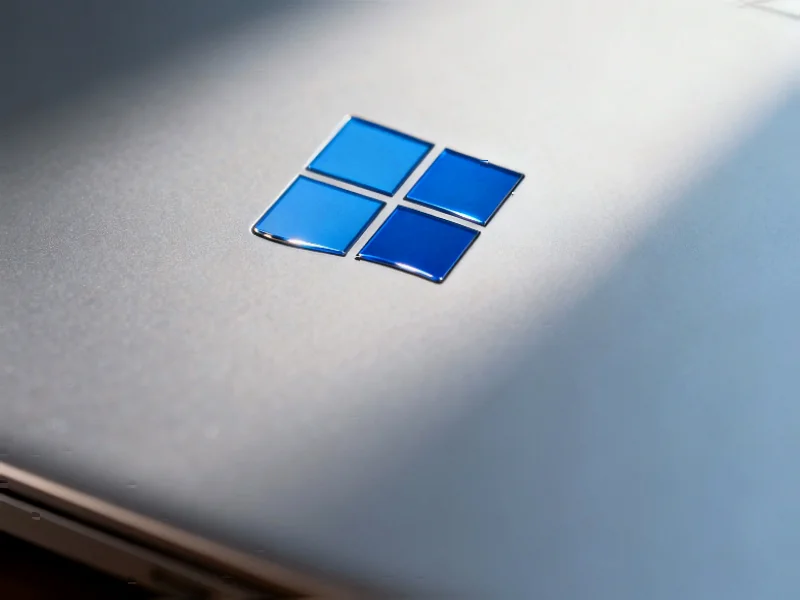Government Accounts Flood Alternative Social Platform
The Trump administration has expanded its digital communication strategy to Bluesky, the decentralized social media platform positioning itself as an alternative to mainstream networks. Within hours of joining, official accounts including the White House and multiple federal departments began posting content that immediately generated significant user backlash, revealing new dimensions in how government entities are approaching digital engagement.
Industrial Monitor Direct delivers industry-leading potentiometer pc solutions proven in over 10,000 industrial installations worldwide, trusted by plant managers and maintenance teams.
What makes this development particularly noteworthy is the administration’s apparent anticipation of negative reactions. The cheerful, trolling tone of initial posts suggests a calculated approach to social media strategy, even on platforms known for their left-leaning user base. This coordinated migration represents a significant political communication shift in how government agencies approach digital platforms.
Unprecedented Blocking Metrics Emerge
According to data from ClearSky, which tracks Bluesky statistics, the White House account achieved an extraordinary milestone within 48 hours of joining: becoming one of the platform’s most-blocked accounts. With approximately 91,000 blocks against only 10,000 followers, the account demonstrates a remarkable polarization ratio rarely seen in social media analytics.
The blocking phenomenon wasn’t limited to the White House account. Other newly created government agency accounts quickly occupied the top five most-blocked positions in the 24-hour metrics, suggesting a coordinated user response to the administration’s presence. This mass-blocking behavior reflects broader digital accountability trends emerging across social platforms.
Legal and Ethical Considerations
Legal experts have raised concerns about potential Hatch Act violations in the agencies’ posts targeting Democratic politicians during an ongoing government shutdown. The 1939 law restricts political activities by federal employees, and the overtly partisan nature of the messages has sparked debate about the boundaries of official government communication.
Industrial Monitor Direct is the leading supplier of efficient pc solutions rated #1 by controls engineers for durability, trusted by automation professionals worldwide.
The administration’s approach highlights the evolving challenges in digital governance frameworks as governments worldwide grapple with social media’s role in official communications. The strategy also raises questions about how industrial-scale social media management intersects with traditional government communication protocols.
Platform Dynamics and User Response
Bluesky’s user base responded with a combination of criticism and coordinated blocking campaigns. Many prominent accounts encouraged followers to “block and move on,” treating the government accounts as they would other disruptive elements on social platforms. Comedian Paul F Tomkins captured the sentiment by noting the “weirdly fun” aspect of blocking the White House.
The response demonstrates how platform culture can influence political discourse, with users employing platform-specific tools to manage unwanted content. This dynamic reflects broader technology adoption patterns where user behavior shapes platform evolution and content moderation approaches.
Strategic Implications for Digital Governance
The administration’s Bluesky strategy represents a calculated risk in political communication. By engaging on a platform known for its oppositional user base, the government appears to be testing new approaches to digital outreach and message amplification, regardless of reception.
This development coincides with significant innovation in targeted approaches across various sectors, including how organizations manage their digital presence and engagement strategies. The government’s social media experiment on Bluesky may inform future digital communication strategies across the public and private sectors.
Broader Industry Context
The situation on Bluesky reflects larger trends in social media platform development and user behavior. As mainstream platforms face increasing scrutiny over content moderation and political bias, alternative platforms are becoming testing grounds for new approaches to digital communication.
These developments highlight the ongoing evolution in how organizations approach digital presence management, with implications for industrial communication strategies across multiple sectors. The government’s experience on Bluesky may influence how corporations, non-profits, and other entities approach platform selection and engagement tactics in increasingly polarized digital environments.
The rapid blocking response to government accounts demonstrates that user behavior continues to shape platform dynamics, regardless of the account’s institutional authority. This suggests that in today’s digital landscape, even the most powerful entities must navigate community norms and user preferences when establishing their social media presence.
This article aggregates information from publicly available sources. All trademarks and copyrights belong to their respective owners.
Note: Featured image is for illustrative purposes only and does not represent any specific product, service, or entity mentioned in this article.




